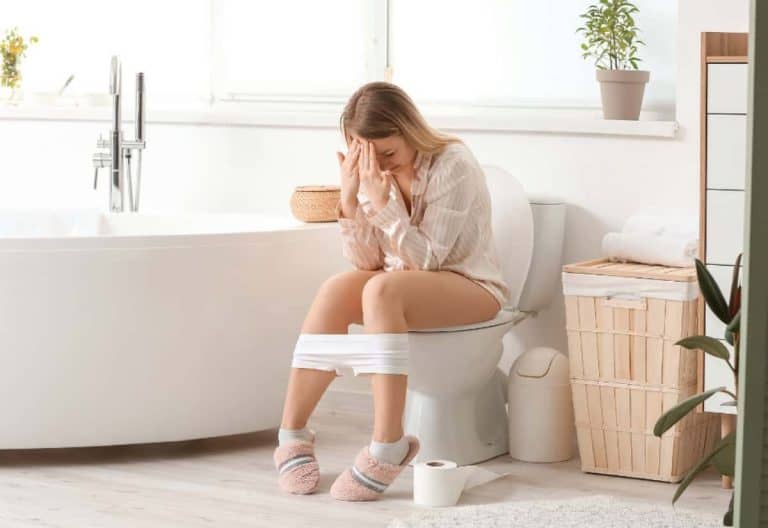Postpartum Depression Symptoms And Ways To Help
This post may contain affiliate links, which means I’ll receive a commission if you purchase through my links, at no extra cost to you. Please read full disclosure for more information.
You might be wondering if you are experiencing postpartum depression symptoms. It’s not a topic most women are eager to talk about. And it almost seems like taboo. But we should be able to express and be validated of our feelings and get the treatment we need to be in a better mental and emotional space.
In this blog post I will go over postpartum depression symptoms, ways to help and start getting the treatment you need to get back to the real you, and my personal experiences.
Never let anyone dismiss or minimize your feelings after childbirth. Postpartum depression is real.
What is postpartum depression?
Postpartum depression is a form of depression some moms go through after having a baby. And you can experience it anytime during your baby’s first year. It’s also important to know that postpartum depression doesn’t only affect first-time moms.
What Are Postpartum Depression Symptoms?
Some of the symptoms you might experience include:
- excessive crying
- feeling hopeless
- very tired
- loss of interest or pleasure in activities
- mood swings
- anxiety (sometimes leading into a panic attack)
- feeling like you’re not a good enough mom
- difficult bonding with your baby
- intense irritability
- lack of concentration
- thoughts of harming yourself or your baby
Read my other blog post on The Major Differences Between Baby Blues, Postpartum Anxiety, Depression, And Psychosis Made Easy.
How long do postpartum hormones last?
This will vary from individual to individual. However, postpartum hormones after childbirth should balance out after 6 to 8 weeks.
And if you’re breastfeeding, it could take as long as you’re nursing until hormones begin to settle.
These postpartum hormones can lead to worsening symptoms that are related to postpartum depression.
How common is postpartum depression?

Most new mothers experience the baby blues after giving birth and about 1 out of 10 of these women will develop more severe and long-lasting depression after delivery according to WebMD.
The major difference between baby blues and postpartum depression is that postpartum depression prevents you from doing things you need to do every day. And if you’re feeling symptoms of postpartum depression for longer than 2 weeks, you need to contact your medical provider.
Related Posts
How To Stop Postpartum Hair Loss And Promote New Hair Growth Fast
The Only C Section Scar And Recovery Postpartum Guide You Need
The Major Differences Between Baby Blues, Postpartum Anxiety, Depression, And Psychosis Made Easy
My Postpartum Depression Story
Postpartum depression does not have to occur immediately after giving birth. In fact, it can happen anytime in the first year of delivery. I had to point that out because I honestly had no idea it could happen months after giving birth.
I gave birth to my first daughter in March 2020 during my last semester of an accelerated bachelor of nursing program. And during the midst of covid-19.
I was already preoccupied with being a new mom, adjusting to a new life with a baby, and getting my nursing program classes done that naturally, I put my mental health on the back burner.
It wasn’t until I was four months postpartum when my husband was away at an army school (senior leaders course), that everything hit me at once. I had no motivation to get out of bed, I felt isolated, and everything that used to make me feel alive and happy wasn’t enough for me in terms of getting me out of the funk I was in.
It felt like I was trapped in my own mind, didn’t know how to express how I was feeling to anyone, and almost felt mute. Like even if I had the courage to talk about what I was going through internally, it wouldn’t come out of my mouth. And in other ways, I felt as if nobody would care or know what to do to help me. The only other way I coped with what I was experiencing was by shutting myself in the room and cry it out.
The Edinburg Postnatal Depression Scale
You know the survey they give you at every well-baby visit called the Edinburg Postnatal Depression Scale? I would just fill out all of the positive answers that wouldn’t raise a red flag to the provider so I could get in and get out. That was a big mistake.
So the following well-baby visit, I decided to be honest with myself and fill out the Edinburg Postnatal Depression Scale (EPDS) according to how I was truly feeling. And the pediatrician referred me to the counselor downstairs.
After my daughter’s appointment, we went downstairs to speak with a counselor, talked about possible treatment options, and then she proceeded to set up an appointment with my primary care provider.
Since I’m a military spouse and the hospital I go to is on a military installation, the series of events might be completely different from what you encounter.
How My Postpartum Depression Got Treated
During my virtual appointment with my doctor, I was prescribed Zoloft, an antidepressant that was considered safe for breastfeeding mamas After 4 weeks, I checked in with her again where she increased the dosage. Then about 4 months later, I scheduled another appointment with her to switch medications.
The reason I wanted to get off the antidepressants was that I felt like it wasn’t helping with my anxiety. And it’s important to know that the same medication that works for one person isn’t always going to work for everyone. So if you’re prescribed medication and don’t feel that it’s being fully effective, let your doctor know.
The week I was waiting for my virtual appointment, I was so sick of taking my antidepressants that I stopped taking them cold turkey. And let me tell you, that was one of the dumbest things I’ve ever done. I highly, highly advise you not ever stop taking mood stabilizer cold turkey. Or you’ll find yourself extremely moody, irritable, and not wanting to get off the couch.
Needless to say, I was taken off antidepressants and put on an anti-anxiety medication, Celexa. And it’s helped tremendously with my daily anxiety.
What do you do when you have postpartum depression?
The best thing to do when you’re feeling symptoms of postpartum depression for longer than 2 weeks and within the first year of delivery is to contact your doctor. I seriously cannot stress this enough.
Postpartum depression doesn’t just go away on its own. And it’s something you’ll want to speak to a professional about. There are several different treatment options your medical provider will go over with you.
But until then, there are ways to minimize symptoms of postpartum depression and start taking the steps to get back on your feet again.
- Ask for a friend or family member to help with your baby so you can rest
- Reach out for help even if it’s not just to sleep
- Try not to feel like you need to do everything in one day
- Write out a list of things you want to get done according to their priority
- Talk or vent with your partner, friends, or other moms (we’ve all been there)
- Join a support group
- Take some time for self-care even if it’s to take a nice, hot shower or Epsom salt bath
- Go outside and get some fresh air
In Conclusion
If you’re experiencing postpartum depression symptoms, it’s so important to get the help you need in order to bond with your baby and feel like yourself again.
Your postpartum depression story isn’t going to be the same or even similar to mine or the next mom’s postpartum depression story. And that’s what makes us unique in our own ways and the experiences we go through
Don’t be like me and dismiss your feelings and neglect your mental health. Take charge of your life, contact your doctor, and be honest with yourself so that you provide your baby with the most optimal care. Postpartum depression is more common than you think and it’s not going to go away until you get professional help.






